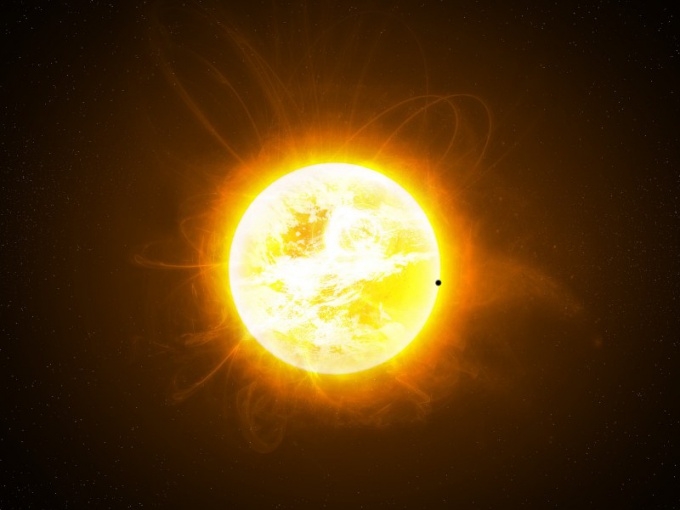The Size Of The Sun
The sun is a star, the surface temperature of which reaches several thousand degrees, so its light, even after going a great distance to the Ground is too bright to the Sun you can see with the naked eye.
Therefore, the size and shape of the Sun, the common man is rather difficult to assess. However, scientists-astronomers established that the Sun is a ball that has almost the right shape. Therefore, to evaluate the size of the Sun, you can use the standard indicators used to measure the size of the circle.
Thus, the diameter of the Sun is 1,392 million kilometers. For comparison, the Earth's diameter is only 12 742 kilometers: thus, by this measure, the size of the Sun exceeds the size of our planet in 109 times. The circle of the Sun across the equator reaches of 4.37 million kilometers, whereas for Land this figure is only 40,000 km, in this dimension the size of the Sun is greater than the size of our planet, in the same number of times.
However, due to the huge temperature on the surface of the Sun, which is almost 6 thousand degrees, its size is gradually reduced. Scientists involved in research of solar activity, say that the Sun for each hour is reduced in diameter at 1 meter. Thus, they assume that a hundred years ago the diameter of the Sun was approximately 870 kilometres more than at the present time.
The Mass Of The Sun
The mass of the Sun is different from the mass of the planet Earth even more dramatically. According to astronomers, at the moment the mass of the Sun is about 1,9891*10^30 kilograms. The mass of the Earth is only 5,9726*10^24 kilograms. Thus, the Sun is heavier than Earth by almost 333 thousand times.
However, due to the high temperature at the surface of the Sun, most of its constituent substances are in the gaseous state, and thus have a relatively low density. So, 73% of the stars have hydrogen and the rest helium, who is in her part of the order of 1/4, and other gases. Therefore, despite the fact that the volume of the Sun exceeds the corresponding figure for the Earth more than 1.3 million times, the density of this star is still lower than that of our planet. Thus, the density of the Earth is about 5.5 g/cm3, whereas the density of the Sun is about 1.4 g/cm3: therefore, these figures differ by about 4 times.
